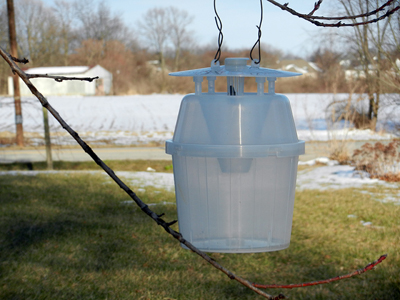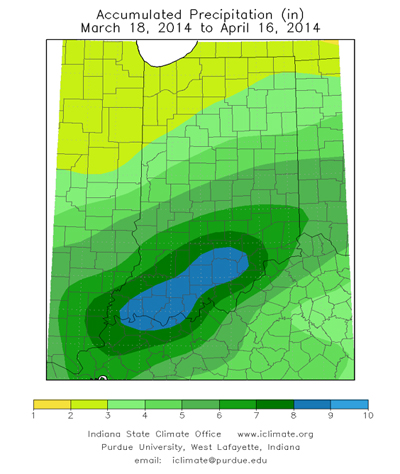USDA-NIFA Extension IPM Grant
Pest & Crop Newsletter, Entomology Extension, Purdue University
Black Cutworm Spring Arrival Met With Hostile Welcoming - (Christian Krupke and John Obermeyer)
• Black cutworm moths arrived before recent freezing nights.
• Many exposed moths/eggs likely froze during cold snap.
• Moth arrival has just begun so stay tuned.
• Don’t rely on insecticide-treated seed to prevent economic damage.
Many of our pheromone trapping cooperators throughout the state captured a significant number of black cutworm moths over the April 12-13 warm spell, just before the recent freezing temperatures - refer to the “Black Cutworm Adult Pheromone Trap Report” for details. The pleasant weather blew in from the southwestern portions of the country also brought a mass of moths. However, the majority of those early arrivals and any eggs laid have likely perished; being a southern migrant they aren’t cold-hardy as our overwintering species (e.g., variegated cutworm). This is good news, although more moths are soon to arrive.
Moth arrival, along with the use of heat units to predict the beginning of larval activity, gives us an indication of potential severity of the problem and locations of concern. Thus, we are able to predict with some degree of accuracy when and where crop damage is likely to occur based on these data. We will track heat unit accumulations and predicted damage for your area in future issues of the Pest&Crop.
Because of the sporadic outbreak nature of this pest, the tried, true, and economic approach to black cutworm management is to scout cornfields, determine infestation and damage levels, and use a rescue treatment, if needed. Producers using insecticide-treated seed may have a false sense of security concerning black cutworm control. The systemic activity of these newer insecticides during the seedling stage should help suppress the smallest larvae feeding on plants. However, this protection is short-lived – as caterpillars grow and the concentration of seed treatment insecticides in plant tissues declines - and fields attracting egg-laying moths during multiple flights will likely experience significant damage and stand losses. During periods of cool temperatures and slow seedling growth uptake of the insecticide may be negligible, leaving the plant even more vulnerable to attack. In short, scout fields if you are seeing high adult moth counts!
Overnite snow and zero black cutworm moths!
![]()
Black Cutworm Adult Pheromone Trap Report
![]()
Armyworm Pheromone Trap Report
![]()
![]()
![]()




